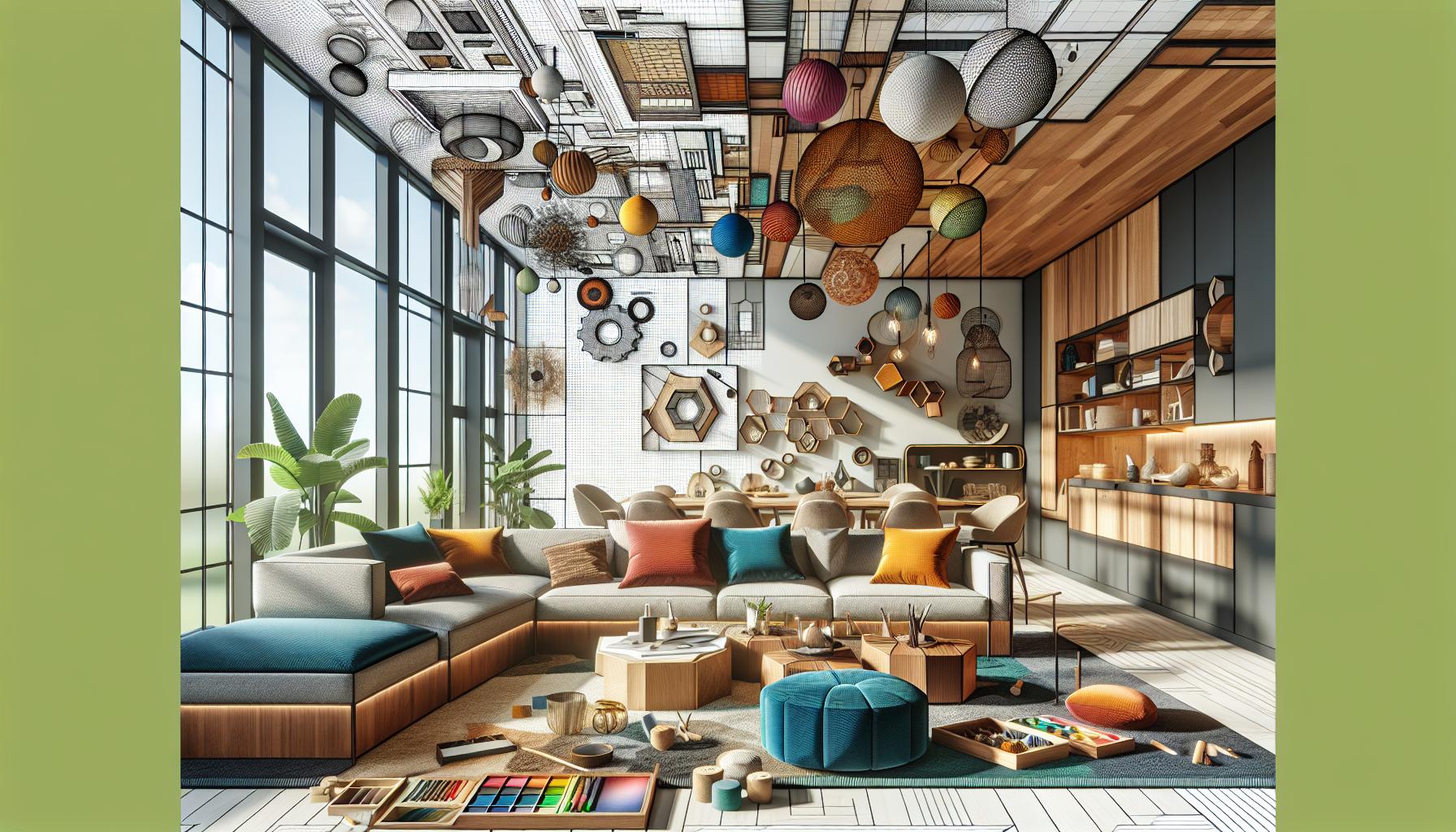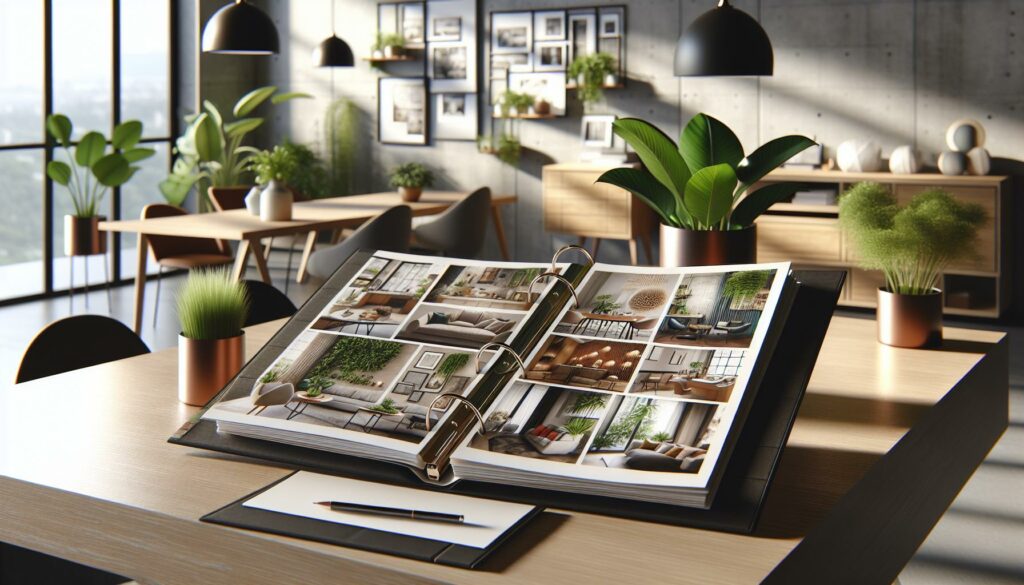Creating an interior design portfolio example can feel like a daunting task, but it’s a crucial step in showcasing your unique style and skills. As a designer, your portfolio isn’t just a collection of projects; it’s a visual narrative of your creative journey. A well-crafted portfolio not only highlights your best work but also tells a story that resonates with potential clients and employers.
I’ve found that the key to a standout portfolio lies in its ability to capture attention while conveying your design philosophy. Whether you’re a seasoned professional or just starting, understanding what to include and how to present it can make all the difference. From selecting the right projects to ensuring high-quality visuals, every detail counts. Let’s explore some inspiring examples that demonstrate how to effectively structure and present an interior design portfolio example that leaves a lasting impression.
Key Takeaways
- Understanding the purpose and structure of an interior design portfolio is crucial in effectively communicating a designer’s unique style and capabilities.
- Organizing projects strategically with high-quality visuals and clear descriptions enhances the portfolio’s impact and demonstrates a designer’s creativity and technical skills.
- Consistency in layout, color schemes, and branding throughout the portfolio reinforces a designer’s personal aesthetic and professionalism.
- Client testimonials and feedback provide important third-party validation, showcasing successful project outcomes and building credibility with potential clients.
- Selecting the right digital platforms and utilizing technology features, such as interactive elements and high-quality images, effectively expand audience reach and engagement.
- Keeping the portfolio regularly updated with new projects and achievements demonstrates ongoing professional growth and commitment to the field.
Interior Design Portfolio Example
Interior design portfolio example are visual collections of a designer’s work, experiences, and style. They serve as an essential tool in the design industry to communicate a designer’s capabilities with clarity and impact. An effective portfolio highlights the designer’s ability to create spaces that are both functional and aesthetically pleasing. Organizing the content strategically in a sequence is vital so potential clients or employers can easily comprehend the designer’s approach and skill set.
Portfolios typically include project descriptions, photographs, sketches, and design plans. Each component provides specific insights into a designer’s thought process and problem-solving abilities. Including diverse project types, such as residential, commercial, or hospitality, can showcase versatility and a broad range of skills. Providing context for each project helps highlight both the designer’s role and the challenges addressed.
Design elements, color schemes, and materials should be consistently represented in a portfolio. This consistency reinforces a designer’s unique aesthetic and brand. It’s crucial that the portfolio design itself mirrors the designer’s style, offering a cohesive and immersive experience to viewers. Using high-quality images and well-crafted narratives will create a portfolio that stands out.
Key Elements of an Interior Design Portfolio

An effective interior design portfolio reflects a designer’s skills and style through strategic organization and visual appeal.
Layout and Design
Layout and design form the backbone of any portfolio. Consistency in font usage and color scheme helps convey professionalism and cohesiveness. White space provides a clean look, allowing each project to stand out without clutter. A clear hierarchy organizes the content, guiding the viewer through the portfolio effortlessly.
Project Selection
Project selection determines the portfolio’s impact. Showcasing a diverse range of projects highlights versatility while focusing on relevant work enhances alignment with client needs. Each project’s importance is emphasized through descriptions that outline objectives and outcomes, demonstrating both creativity and technical ability.
Visuals and Photography
Visuals and photography capture the essence of a designer’s work. High-quality images emphasize craft details and spatial arrangements, making an immediate impression. Including before and after photos offers insight into transformative design capabilities, revealing problem-solving skills and artistic vision.
Personal Branding
Personal branding distinguishes a portfolio from the competition. A designer’s logo, color palette, and typography reflect their identity consistently across all portfolio materials. An introductory statement or bio provides context to the work, framing the designer’s philosophy and personal touch in a memorable way.
Showcasing Creativity and Expertise

Demonstrating creative flair alongside technical proficiency is pivotal in an interior design portfolio example. Prospective clients and employers seek distinctive examples that exemplify innovative solutions and successful transformations.
Innovative Designs
Highlighting originality and design innovation captures attention and demonstrates a designer’s unique perspective. Including diverse styles and creative interpretations of spaces showcases versatility. I ensure each project includes detailed design elements, such as custom furniture layouts, inventive use of materials, and thoughtful color choices. By illustrating how designs address client needs and improve spatial functionality, I can further highlight my creativity.
Successful Case Studies
Case studies demonstrate the effective implementation of creative concepts. They provide a narrative that details project challenges, solutions, and measurable outcomes. In my portfolio, I feature before-and-after comparisons and client testimonials to substantiate success. Providing real-life examples of how design decisions led to improved aesthetics and client satisfaction emphasizes practical expertise. Additionally, including metrics like increased property value or enhanced space usability further reinforces the impactful results of my work.
Importance of Client Testimonials and Feedback

Client testimonials and feedback are crucial in an interior design portfolio. They provide third-party validation for my design expertise, helping establish credibility with potential clients. Positive testimonials can convey the satisfaction and success of past projects, enhancing my reputation in the competitive design industry.
Feedback from clients offers invaluable insights into how my designs have impacted their lives. By showcasing genuine client stories, I can illustrate the transformative effect of my work beyond visual appeal. Testimonials confirm the project’s objectives and outcomes from the client’s perspective, adding credibility.
Including diverse testimonials related to different project types supports my versatility and adaptability. Feedback on various aspects, such as communication and problem-solving skills, helps potential clients understand how I approach challenges and deliver successful results. This holistic view of my work can significantly influence a prospect’s decision to engage my services.
How to Present Your Work Digitally
Presenting your work digitally is essential for reaching a wider audience. My approach involves several key strategies to effectively showcase an interior design portfolio online.
Select the Right Platform: Various platforms cater to different audiences. I prefer using websites like Behance and Houzz for visually-driven content, while LinkedIn serves as a professional portfolio hub. Each platform has unique features; selecting the right one impacts how my work is perceived.
Organize for Easy Navigation: An intuitive layout is crucial. I arrange my projects in a clear, logical order, starting with introductions and moving through detailed images and descriptions. This structure guides viewers seamlessly through my portfolio, enhancing their experience.
Utilize High-Quality Images: Visuals speak volumes. I invest in professional photography to ensure my images are clear and vibrant. High-resolution photos highlight my attention to detail and quality of work, captivating potential clients instantly.
Integrate Interactive Elements: Interactive content like 360-degree views and virtual tours engages viewers. I incorporate these elements within my portfolio for an immersive experience, allowing clients to explore designs in greater depth.
Include Client Testimonials: Adding testimonials to digital presentations builds trust. I strategically place positive feedback from satisfied clients to validate my work, offering credibility and assurance to prospective clients.
Keep the Portfolio Updated: Regular updates reflect ongoing engagement and professional growth. I frequently refresh my digital portfolio with recent projects and new achievements to demonstrate continuous skill enhancement.
By following these steps, I ensure my digital portfolio effectively communicates my design expertise and style to a broader audience.
Compiling Design Projects
Crafting an interior design portfolio example is more than just compiling projects; it’s about weaving a story that reflects my unique style and expertise. By strategically selecting projects and incorporating high-quality visuals, I can effectively communicate my design philosophy and capabilities. Personal branding elements and client testimonials further enhance my portfolio’s credibility, setting it apart in a competitive industry. Embracing digital platforms allows me to reach a wider audience and showcase my work in engaging, interactive formats. With these strategies, my portfolio not only attracts potential clients and employers but also demonstrates my commitment to delivering innovative and functional design solutions.

